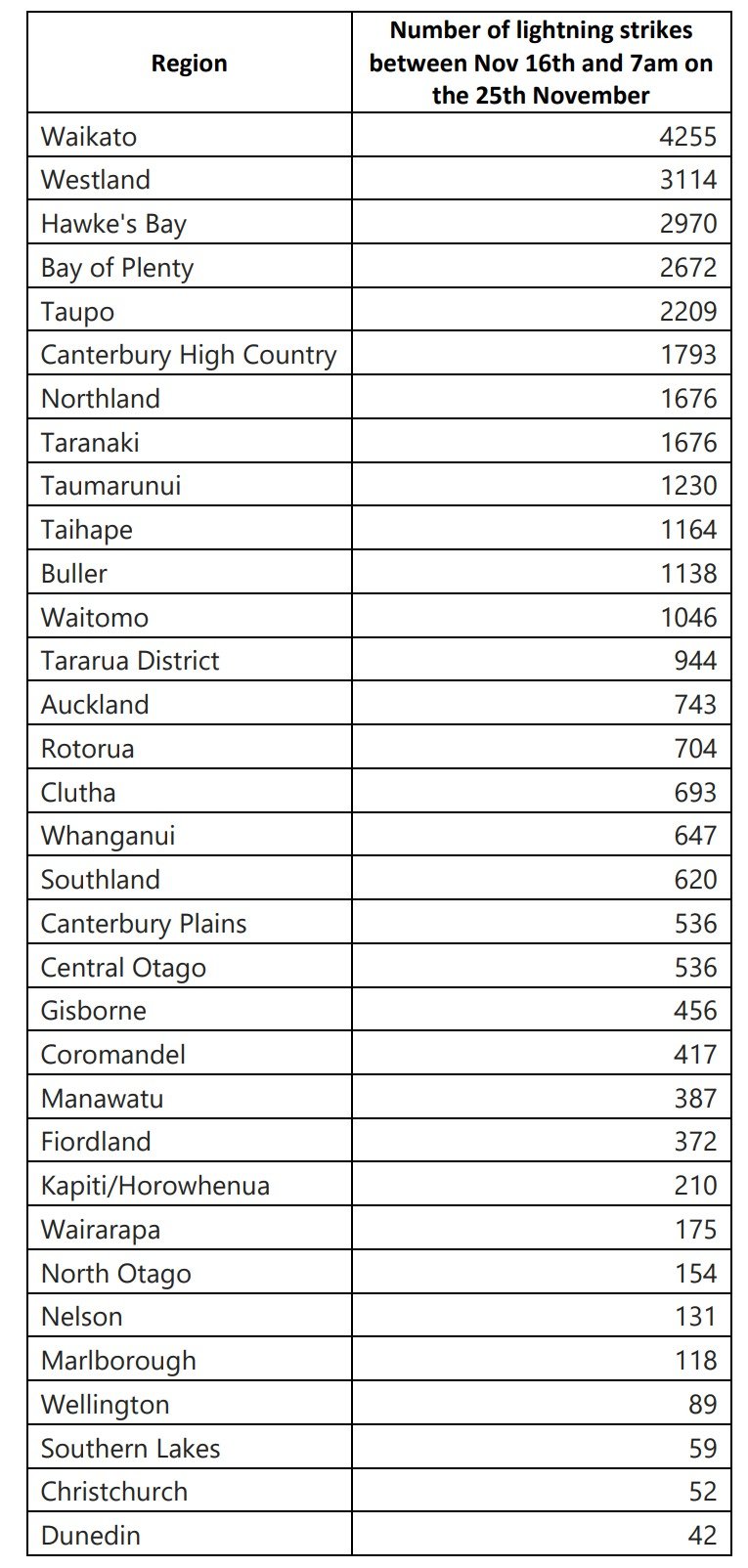Lightning strikes over New Zealand: Waikato takes 1st place
Lightning strikes recorded last week over New Zealand (16 - 25 November).
Last week, between 16 - 25 November, the Aotearoa / New Zealand region saw 91,349 lightning strikes (Source: MetService), with around a 1/3 of those situated over the land. All regions of the country have experienced significant lightning activity, however of all the regions around the country, the Waikato Region takes 1st place with 4,255 lightning strikes over the period, followed by Westland (3,114) and Hawke's Bay (2,970). Dunedin had the lowest recorded number of strikes, with 42 recorded over the 9-day period (See full list below).
Lightning strikes over the last 24h, issued on 25th November at 8 am.
Lightnings is a natural electrostatic discharge phenomenon in which two electrically charged regions (either atmosphere to atmosphere, or atmosphere to ground) temporarily neutralize themselves, resulting in an average energy discharges in the gigajoules range per lightning strike. To put this in context, between the 9 days between 16-25th November approximately the same amount of energy was discharged into the atmosphere (or ground) as that either generated by the New Zealand National Grid or consumed within all industry sectors in New Zealand (Source: https://www.mbie.govt.nz/building-and-energy/energy-and-natural-resources/energy-statistics-and-modelling/energy-statistics/electricity-statistics/)
Lightning represents one of the most dangerous weather phenomena faced by many of the operators we work with both nationally and internationally and across different industry sectors (ports, harbours, airports, councils, energy sectors etc.). The MetService Group has a suite of lightning detection and proximity alerting services, designed to help customers mitigate risks and make informed decisions. Our services include real-time lightning observations; site-specific, user-defined proximity alerting; and cease work, all-clear, and safe-to-return messaging, and well done Waikato (being based in Raglan, MetOcean shares your success!)
Contact us at enquiries@metocean.co.nz for more information.
Number of lightning strikes between 16th November and 7am on the 25th November for all regions in New Zealand.



